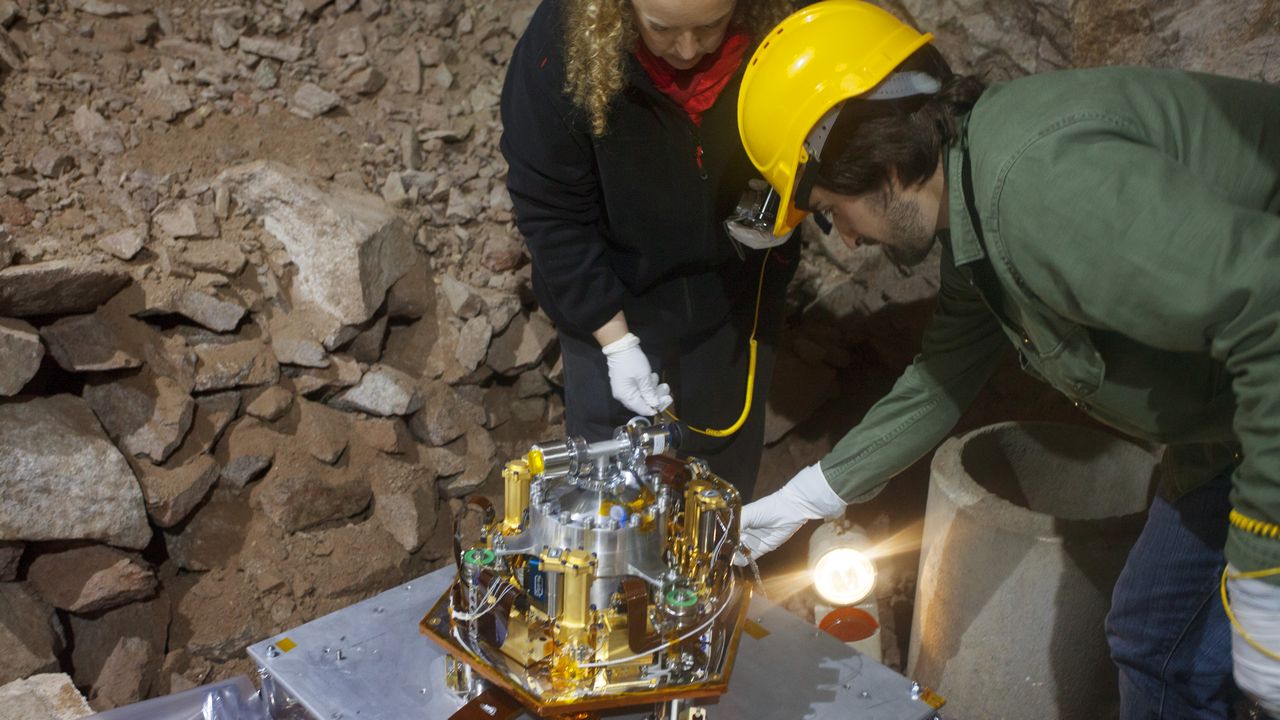The “InSight” Mars mission planned for 2018 by NASA and European partners is aimed at studying geophysical properties of the “red planet.” In addition, fundamental questions relating to the planetary and solar system shall be answered to better understand the history of creation of planets of the inner solar system, one of which is the Earth. A highly sensitive seismograph (SEIS) will be one of the main instruments of the mission. The qualifying model, or sister instrument, of this seismometer is presently being tested by the joint geoscientific observatory of Karlsruhe Institute of Technology (KIT) and Universität Stuttgart, the Black Forest Observatory (BFO).
Similar to the earthquakes on Earth and on the Moon, it is expected that there are also quakes on our neighboring planet Mars. In terms of size, Mars ranges between the Moon and the Earth. SEIS is to observe these Mars quakes and, hence, represents a central instrument of the “InSight” (Interior Exploration Using Seismic Investigations, Geodesy, and Heat Transport) mission. From the recordings, conclusions shall be drawn with respect to the structure of Mars, the size of its core, the thickness of its crust, and on whether its core is liquid.
Findings about the Interior of Mars
“Most of our findings on the properties of the Earth’s mantle and the Earth’s core were obtained from analyzing seismic waves. That is why this method is now also planned to be used for studying the inner structure of Mars,” Thomas Forbriger of KIT, one of the scientists of BFO, says. Rudolf Schnidrig-Widmer of Stuttgart University, who coordinates current tests, explains: “Seismic waves propagate through the entire body of the Earth. Similar to X-ray tomography in medicine, an image of the interior of the Earth can be derived from seismic waves.” For this reason, there is great hope that SEIS will provide many new findings about Mars’s interior. The SEIS instrument package will contain six seismometers to measure ground movement in vertical and two horizontal directions. “With painstaking precision, we manually arrange the seismometers on the ground, adjust them, and shield them against interference. On Mars, the landing robot will have to do this. This alone will be a true technical masterpiece,” Thomas Forbriger says. At BFO, the scientists test interaction of the different components from France, Germany, the United Kingdom, Switzerland, and the USA.
Excellent Measurement Conditions
Measurement conditions at the BFO are excellent. Ambient seismic noise in the shut-down ore mine near Schiltach in the Black Forest is very low. The seismometers operated supply data with lowest noise in global comparison. Moreover, the BFO has an excellent measurement infrastructure and is one of the very few seismological observatories, where scientists are working onsite: When testing instruments, support can be rendered any time. The complete tunnel system is located in granite. The inner part of the tunnel accommodating the measurement chambers for the instruments is isolated from the outer world by two pressure locks. This part of the tunnel, where the tests are executed, is situated about 150 m below the Earth’s surface. In this way, instruments are shielded from impacts of direct air pressure or temperature fluctuations and are located more than 5 km away from anthropogenic sources of interference (industry, traffic). All this makes the BFO an extraordinarily calm measurement location.
Being “The University in the Helmholtz Association”, KIT creates and imparts knowledge for the society and the environment. It is the objective to make significant contributions to the global challenges in the fields of energy, mobility, and information. For this, about 10,000 employees cooperate in a broad range of disciplines in natural sciences, engineering sciences, economics, and the humanities and social sciences. KIT prepares its 22,800 students for responsible tasks in society, industry, and science by offering research-based study programs. Innovation efforts at KIT build a bridge between important scientific findings and their application for the benefit of society, economic prosperity, and the preservation of our natural basis of life. KIT is one of the German universities of excellence.

